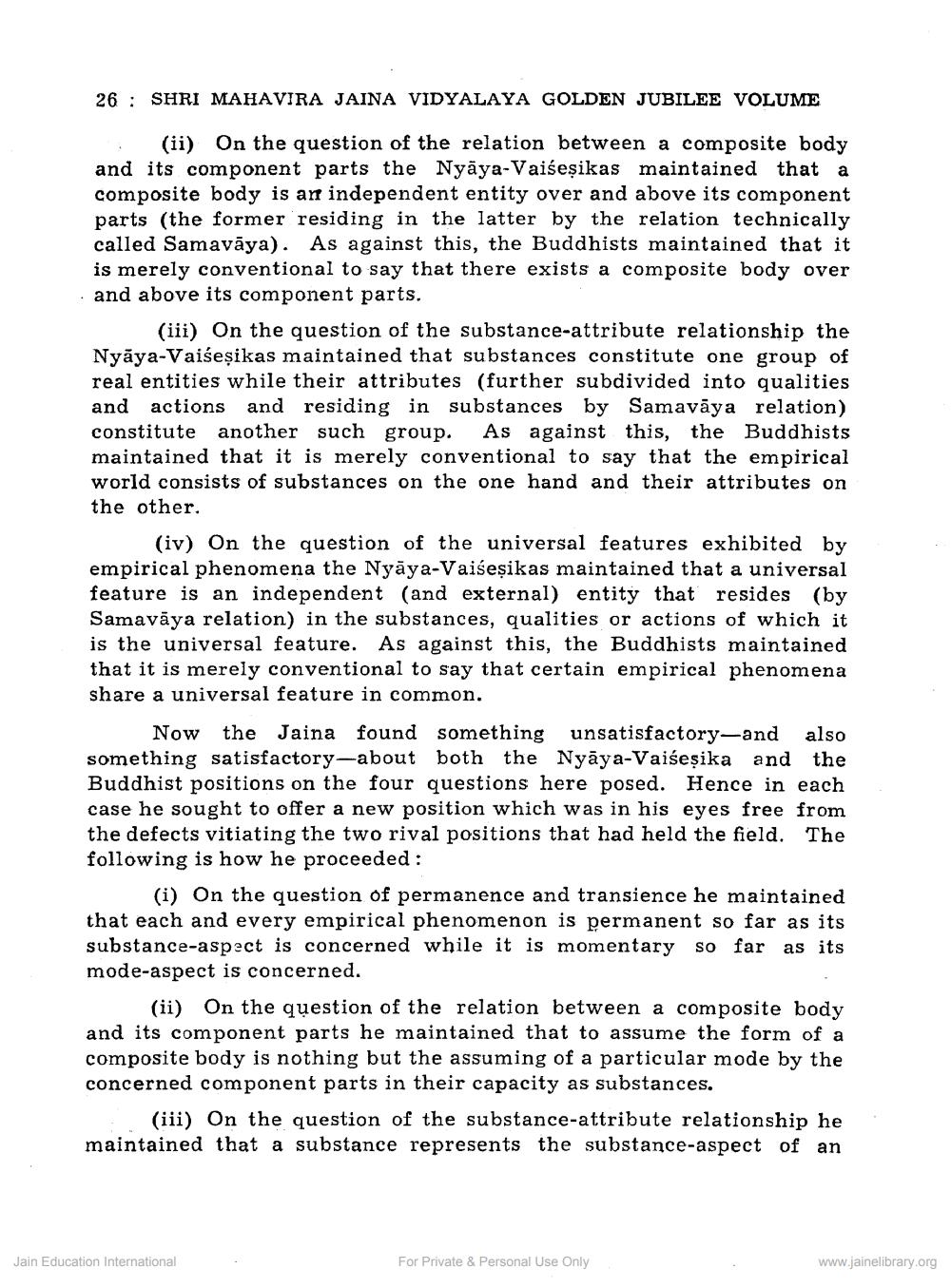Book Title: Logical and Historical Significance of Jaina Philosophical Tradition Author(s): K K Dixit Publisher: Z_Mahavir_Jain_Vidyalay_Suvarna_Mahotsav_Granth_Part_1_012002.pdf and Mahavir_Jain_Vidyalay_Suvarna_ View full book textPage 6
________________ 26 : SHRI MAHAVIRA JAINA VIDYALAYA GOLDEN JUBILEE VOLUME (ii) On the question of the relation between a composite body and its component parts the Nyāya-Vaiśeșikas maintained that a composite body is an independent entity over and above its component parts (the former residing in the latter by the relation technically called Samavāya). As against this, the Buddhists maintained that it is merely conventional to say that there exists a composite body over and above its component parts. (iii) On the question of the substance-attribute relationship the Nyaya-Vaiseșikas maintained that substances constitute one group of real entities while their attributes (further subdivided into qualities and actions and residing in substances by Samavāya relation) constitute another such group. As against this, the Buddhists maintained that it is merely conventional to say that the empirical world consists of substances on the one hand and their attributes on the other. (iv) On the question of the universal features exhibited by empirical phenomena the Nyāya-Vaiseșikas maintained that a universal feature is an independent (and external) entity that resides (by Samavāya relation) in the substances, qualities or actions of which it is the universal feature. As against this, the Buddhists maintained that it is merely conventional to say that certain empirical phenomena share a universal feature in common. Now the Jaina found something unsatisfactory-and also something satisfactory-about both the Nyāya-Vaiseșika and the Buddhist positions on the four questions here posed. Hence in each case he sought to offer a new position which was in his eyes free from the defects vitiating the two rival positions that had held the field. The following is how he proceeded: (i) On the question of permanence and transience he maintained that each and every empirical phenomenon is permanent so far as its substance-aspect is concerned while it is momentary so far as its mode-aspect is concerned. (ii) On the question of the relation between a composite body and its component parts he maintained that to assume the form of a composite body is nothing but the assuming of a particular mode by the concerned component parts in their capacity as substances. (iii) On the question of the substance-attribute relationship he maintained that a substance represents the substance-aspect of an Jain Education International For Private & Personal Use Only www.jainelibrary.orgPage Navigation
1 ... 4 5 6 7 8 9
